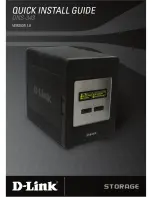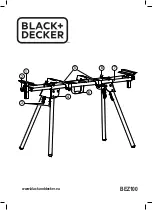
T
T
T
S
S
S
3
3
3
2
2
2
M
M
M
~
~
~
1
1
1
G
G
G
C
C
C
F
F
F
8
8
8
0
0
0
80X CompactFlash Card
Transcend Information Inc.
V1.1
43
Figure: Device Control Register
Bit 7
: this bit is ignored by the CompactFlash Storage Card. The host software should set this bit to 0.
Bit 6
: this bit is ignored by the CompactFlash Storage Card. The host software should set this bit to 0.
Bit 5
: this bit is ignored by the CompactFlash Storage Card. The host software should set this bit to 0.
Bit 4
: this bit is ignored by the CompactFlash Storage Card. The host software should set this bit to 0.
Bit 3
: this bit is ignored by the CompactFlash Storage Card. The host software should set this bit to 0.
Bit 2 (SW Rst)
: this bit is set to 1 in order to force the CompactFlash Storage Card to perform an AT Disk controller Soft
Reset operation. This does not change the PCMCIA Card Configuration Registers (see Section 4.3 to 4.7)
as a hardware Reset does. The Card remains in Reset until this bit is reset to ‘0.’
Bit 1 (-IEn)
: the Interrupt Enable bit enables interrupts when the bit is 0. When the bit is 1, interrupts from the
CompactFlash Storage Card are disabled. This bit also controls the Int bit in the Configuration and Status
Register. This bit is set to 0 at power on and Reset.
Bit 0
: this bit is ignored by the CompactFlash Storage Card.
5.5.11 Card (Drive) Address Register (Address 3F7h[377h]; Offset Fh)
This register is provided for compatibility with the AT disk drive interface. It is recommended that this register not be
mapped into the host’s I/O space because of potential conflicts on Bit 7. The bits are defined as follows:
Bit 7
: this bit is unknown.
Implementation Note:
Conflicts may occur on the host data bus when this bit is provided by a Floppy Disk Controller operating at the same
addresses as the CompactFlash Storage Card. Following are some possible solutions to this problem for the
PCMCIA implementation:
1) Locate the CompactFlash Storage Card at a non-conflicting address, i.e. Secondary address (377) or in an
independently decoded Address Space when a Floppy Disk Controller is located at the Primary addresses.
2) Do not install a Floppy and a CompactFlash Storage Card in the system at the same time.
3) Implement a socket adapter that can be programmed to (conditionally) tri-state D7 of I/0 address 3F7h/377h when
a CompactFlash Storage Card is installed and conversely to tristate D6-D0 of I/O address 3F7h/377h when a
floppy controller is installed.
4) Do not use the CompactFlash Storage Card’s Drive Address register. This may be accomplished by either a) If
possible, program the host adapter to enable only I/O addresses 1F0h-1F7h, 3F6h (or 170h-177h, 176h) to the
CompactFlash Storage Card or b) if provided use an additional Primary / Secondary configuration in the
CompactFlash Storage Card which does not respond to accesses to I/O locations 3F7h and 377h. With either of
these implementations, the host software shall not attempt to use information in the Drive Address Register.
Bit 6 (-WTG)
: this bit is 0 when a write operation is in progress; otherwise, it is 1.
Bit 5 (-HS3)
: this bit is the negation of bit 3 in the Drive/Head register.
















































